Think small, think electric, as Hyundai attempts to revolutionise the classic Indian three-wheeler
Hyundai’s Micro Mobility strategy, in collaboration with Indian manufacturer TVS, has revealed two conceptual takes on small electric urban transport in a bid to cut the country’s crushing pollution issue
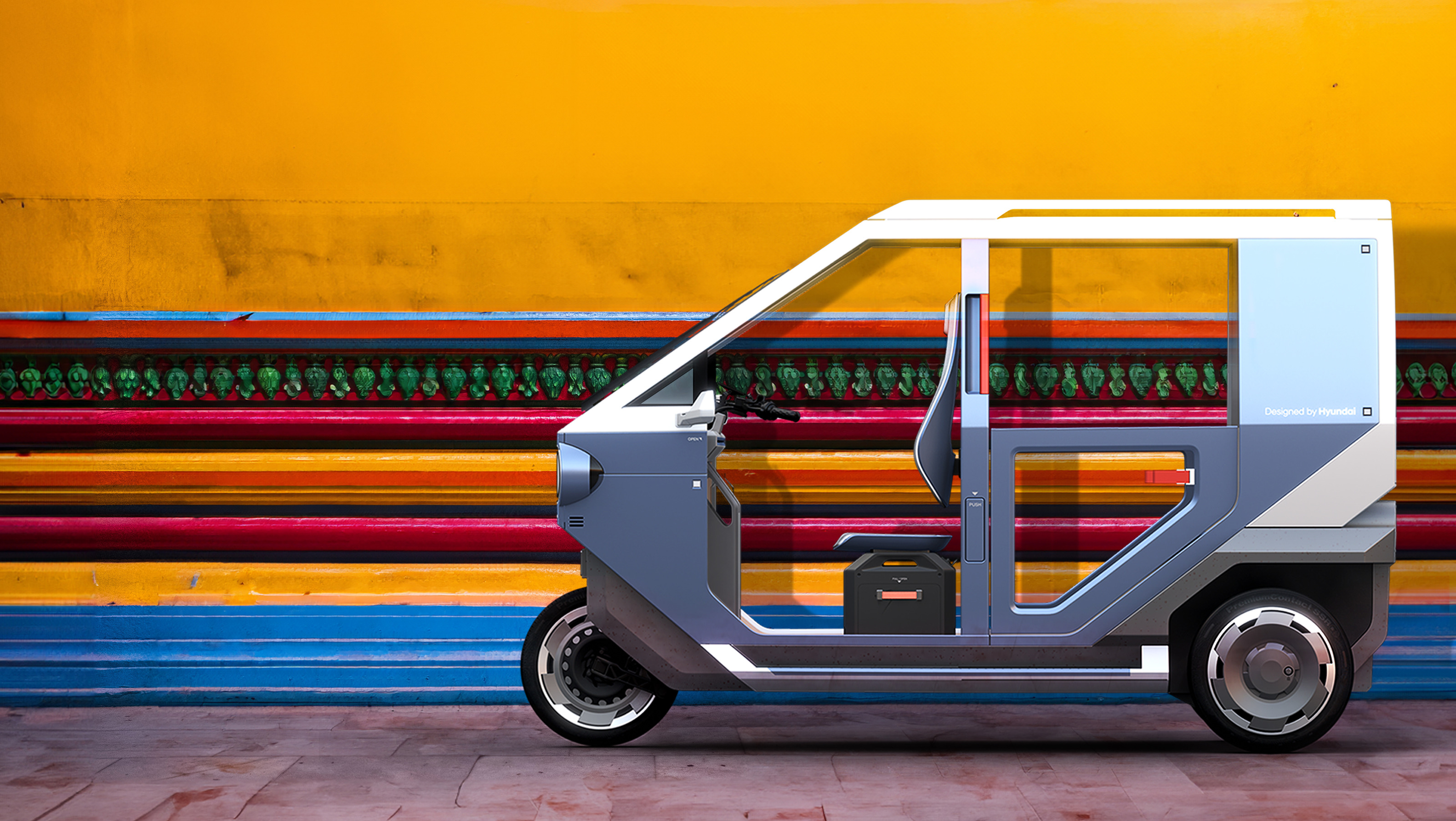
The Bharat Mobility Global Expo might not be on the radar of casual observers of the world auto market, but this trade show is one of India’s largest. And India’s market is not to be sniffed at. As well as being the world’s third largest market for passenger vehicles, the country is also the largest supplier of three-wheeled vehicles and the second-largest manufacturer of two-wheelers. Even though India’s net zero target date of 2070 feels a long way off, it’s perhaps realistic in a country awash with low-cost, high-polluting ICE vehicles that still form the backbone of many urban transport networks.
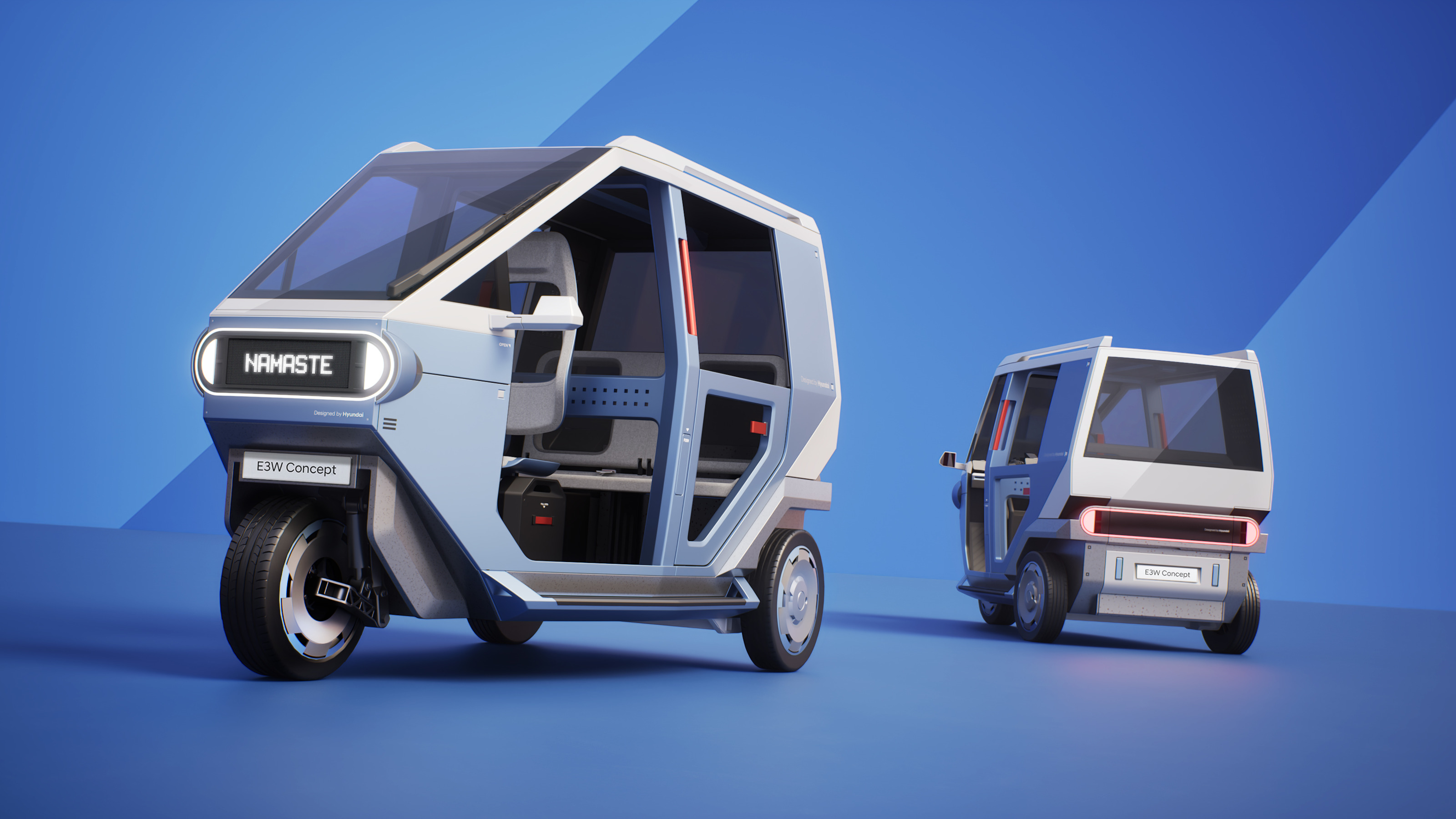
The Hyundai Micro Mobility concept was shown in three- and four-wheeled versions
All that needs to change. At this year’s Bharat Expo, Hyundai unveiled two new micro mobility concepts, the E3W and E4W, developed in collaboration with India’s TVS Motor Company. The keywords here are ‘micro mobility’, the category that includes the bikes, scooters, trikes and quadricycles that make up such a visible (and audible) mass of India’s fleet. TVS is a useful partner, a mobility titan that’s one of the country’s largest manufacturers of two- and three-wheelers, with capacity for nearly 5 million of the former and a quarter of a million of the latter each year.
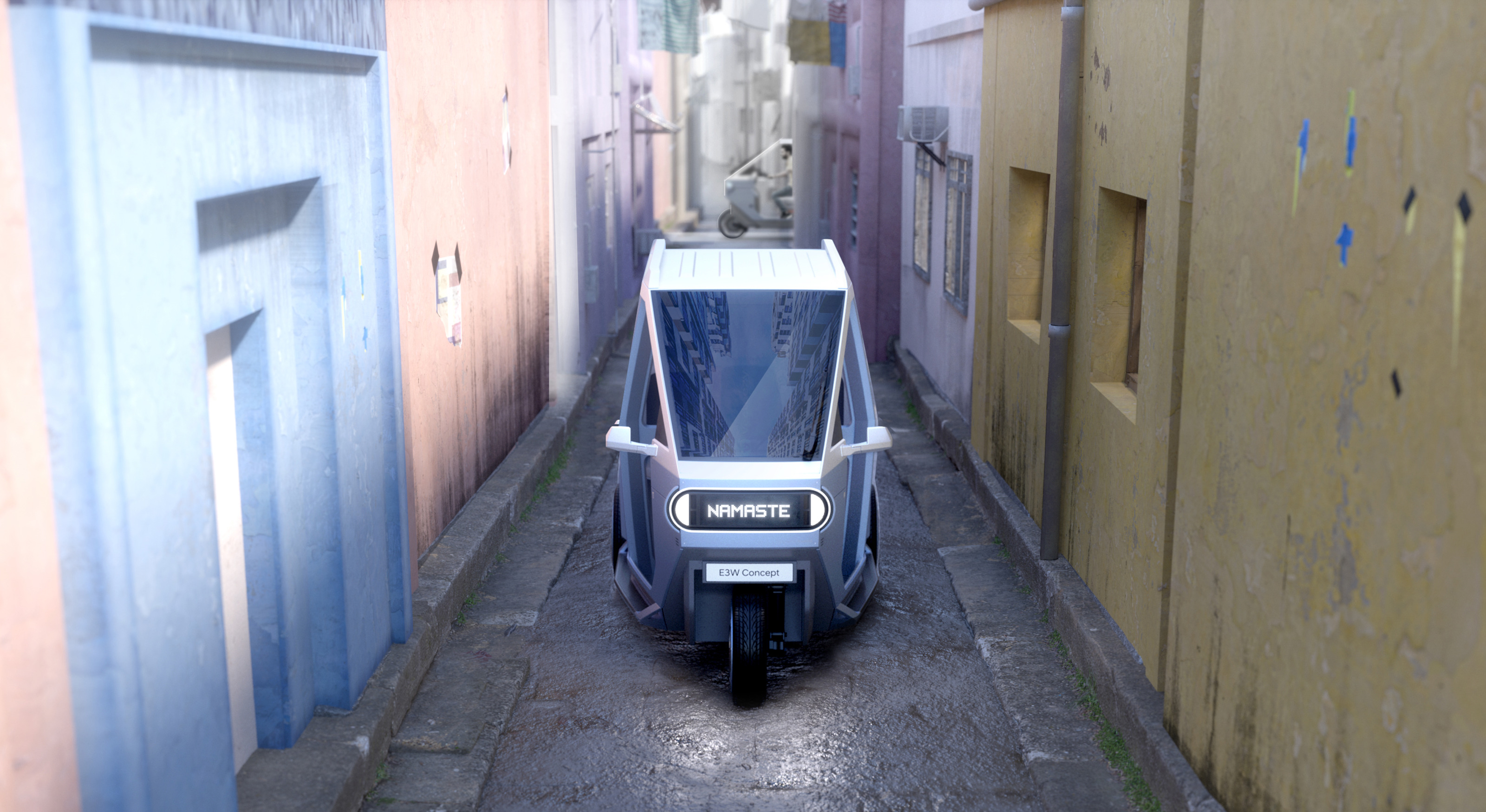
The E3W Micro Mobility concept is designed for narrow urban streets
Hyundai is proposing to bring electric transportation bang up to date, with a concept for a three-wheeler for the Indian market along with a micro four-wheeler, both of which designed to be manufactured and marketed by TVS. In India’s cities, zero emission micro mobility would make a substantial impact on health and wellbeing; the country has some of the worst air pollution in the world thanks to the combination of climate and vehicle emissions. According to the Clean Air Fund, 21 of the world’s 30 most polluted cities are in India; New Delhi has airborne particle levels 10 times above the WHO guidelines.
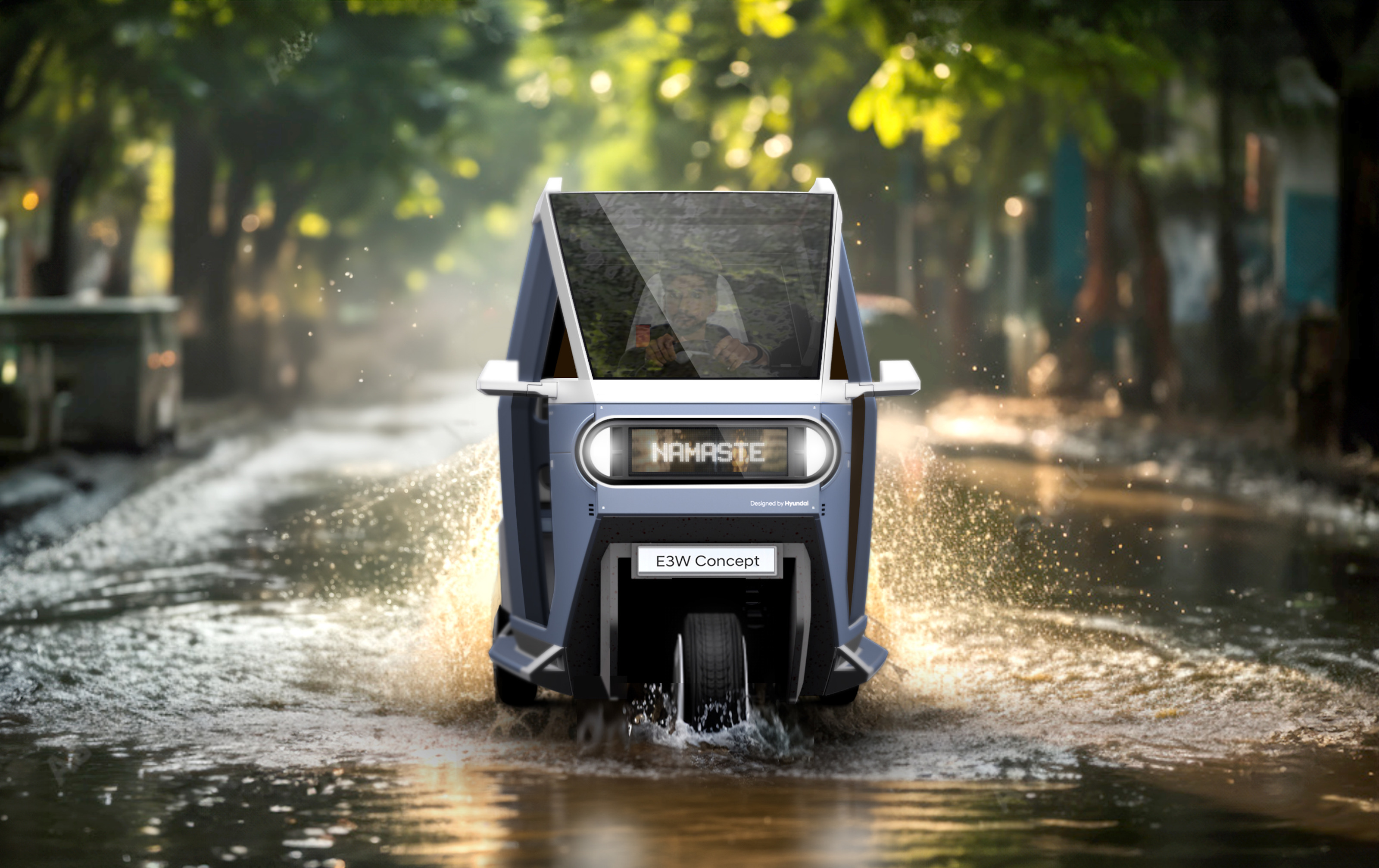
High ground clearance helps in India's monsoon season
Affordability, durability and flexibility are therefore the keys to transforming the country’s fleet. To that end, Hyundai’s design team has dived into India’s cultural and commercial mobility requirements to create this pair of concepts. So-called ‘last mile’ solutions for delivery and short journeys are spliced with the day-to-day requirements of businesses, families and public transport, all of which require a durable, tried and tested platform.
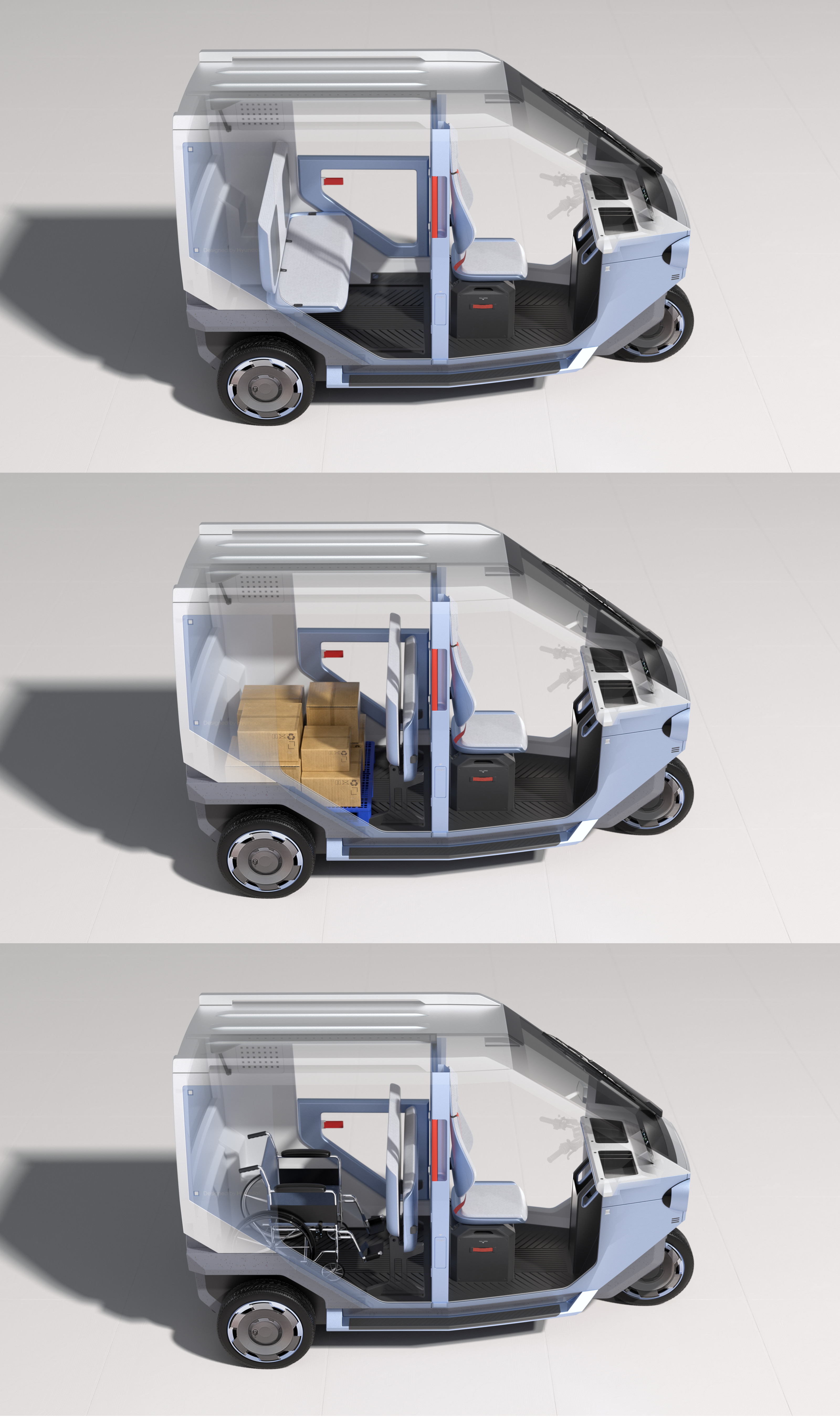
The E3W Micro Mobility concept is easily reconfigurable
Reducing air pollution might be a humanitarian position, but there are also commercial benefits to reap. ‘Hyundai Motor is a customer-centric brand, and caring for people in India is our first mission,’ says SangYup Lee, Executive Vice President and Head of Hyundai and Genesis Global Design, ‘This commitment has driven us to explore designing micro-mobility solutions tailored to India's unique environment, reimagining the iconic three-wheeler to enhance mobility experiences through thoughtful design.’
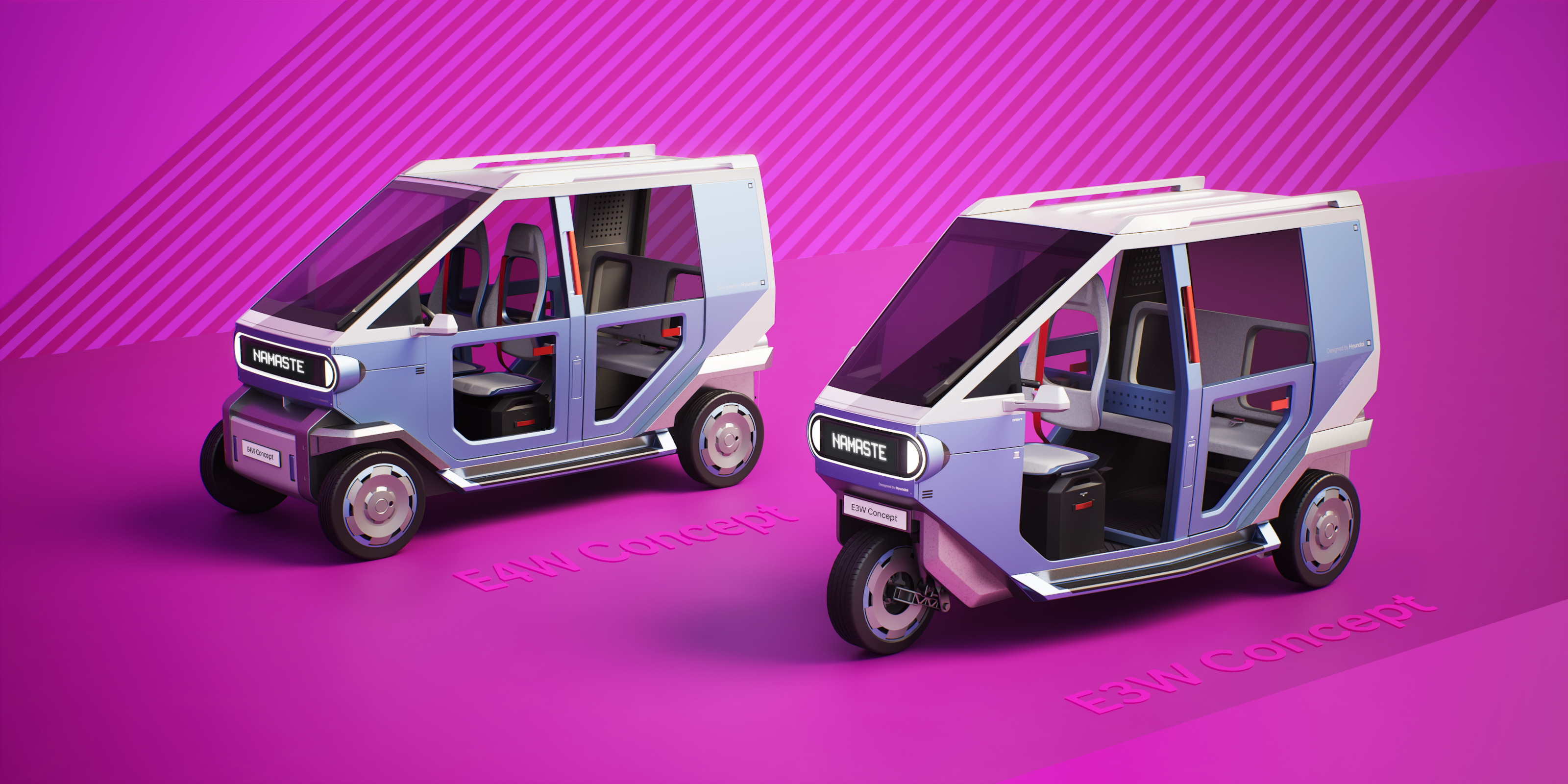
The E4W and E3W Micro Mobility concepts
The E3W three-wheeler shown here is a contemporary update of the classic auto rickshaw, an extremely familiar sight (and sound) on the streets of many Asian cities, not just in India. Millions of these low-cost, ultra-functional vehicles are sold each year across the region, and although electrification has started to make an inroad, many still use the highly polluting two-stroke engine.

Hyundai E3W top view
It’s joined by a four-wheeler equivalent, which isn’t such a region-specific vehicle and would give TVS more global opportunities for sales. Both concepts upgrade key aspects of the genre, starting with improved visibility and collision protection. The new motor rickshaw is still as narrow and manoeuvrable as the original, and there’s an adjustable ride height to deal with idiosyncratic road surfaces and the monsoon rains. Larger wheels have also been added to smooth out the ride. The windshield is much more angled than the upright auto-rickshaw of old and electrification allows for a completely flat floor for added practicality.
Wallpaper* Newsletter
Receive our daily digest of inspiration, escapism and design stories from around the world direct to your inbox.
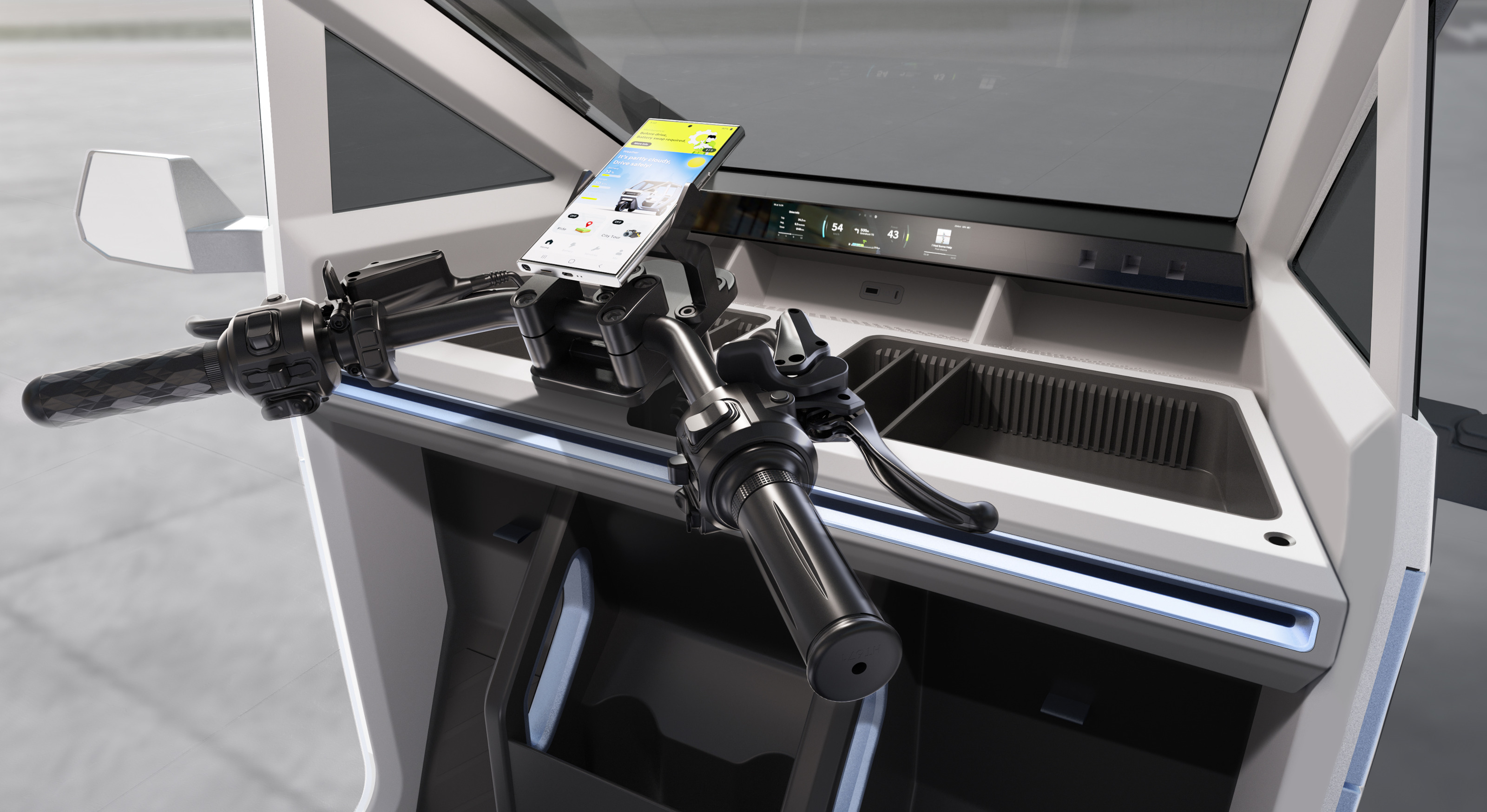
Interior of the Hyundai E3W
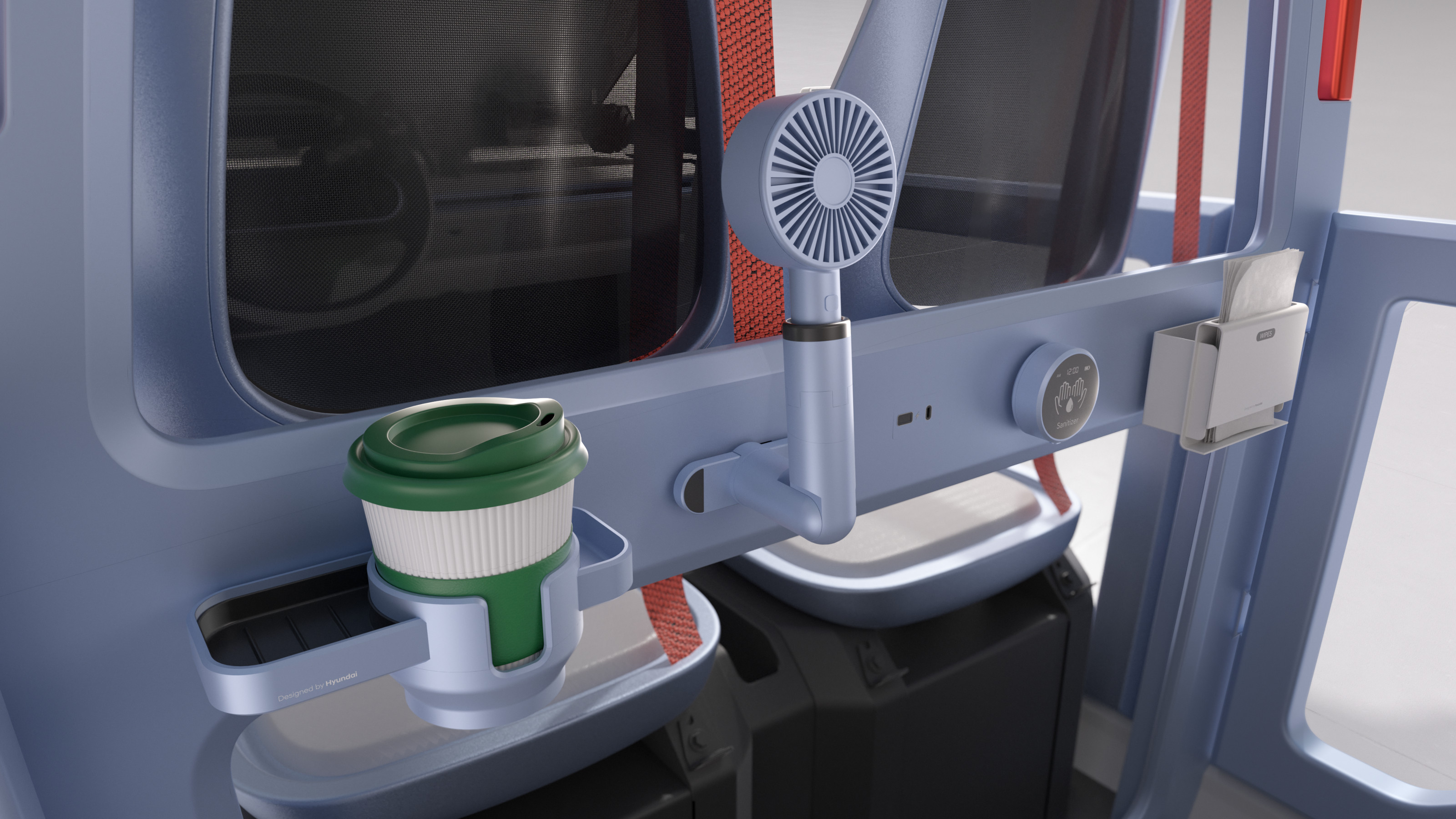
The rear compartment of the E3W is functional and practical
Hyundai have named the concept colour ‘Aakaashi Blue’, inspired by the ‘vast Indian Ocean and boundless sky, a testament to the limitless aspirations of the Indian spirit.’ Other location-specific details include a tow hook to haul the little trike from larger potholes and the idea of heat-resistant gloss paint. Inside, there is a functional and adaptable interior, with space for accessories and knick-knacks, and a simple instrument cluster.
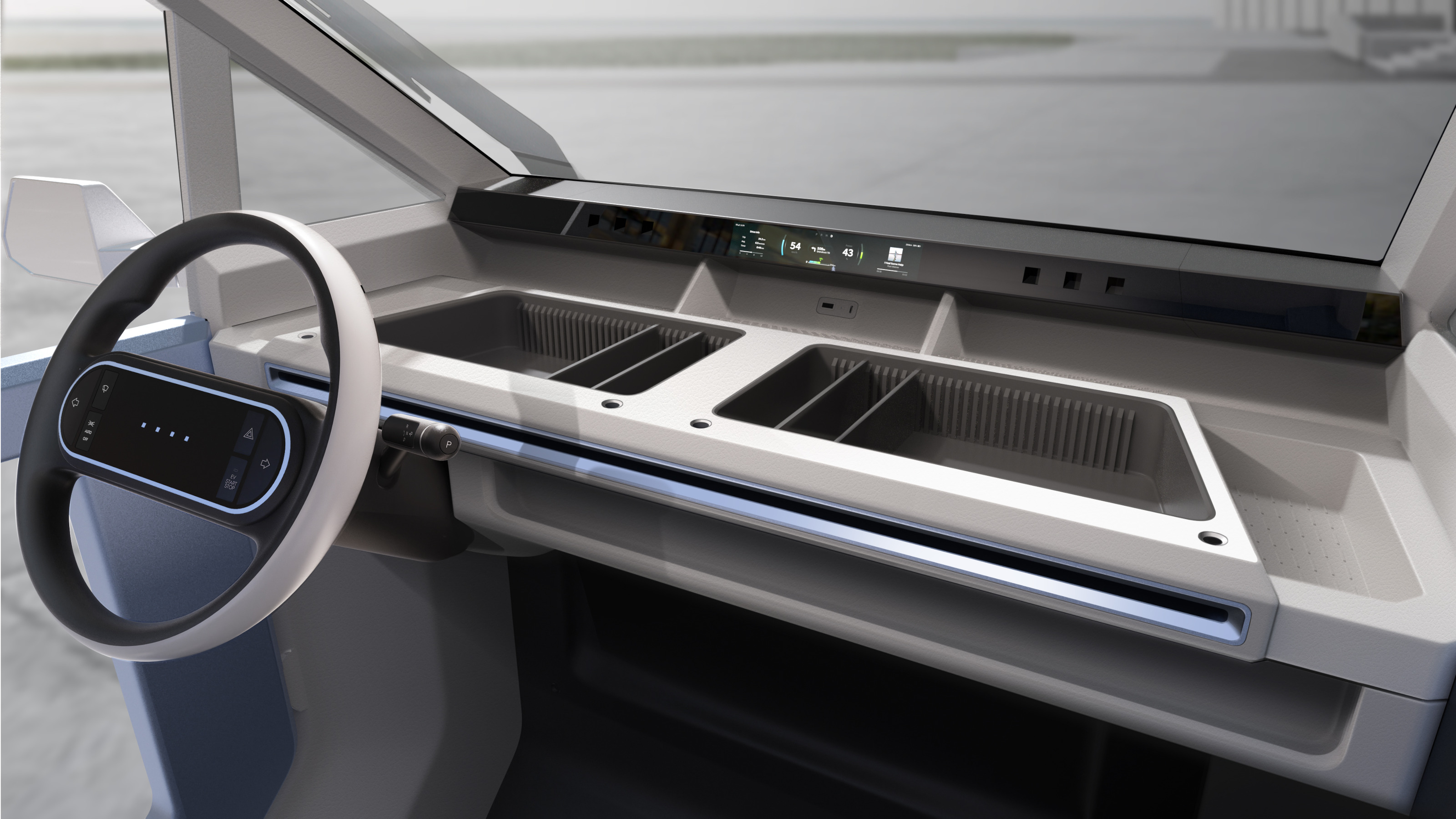
Interior of the Hyundai E4W
Hyundai’s concept highlights the flexibility required from the sector, with the ability to swap out the seats for cargo, a wheelchair or anything else that’s required. The dot matrix message screen on the front is a nod to the digital age (although we suspect the horn will remain the primary means of driver-to-driver communication).
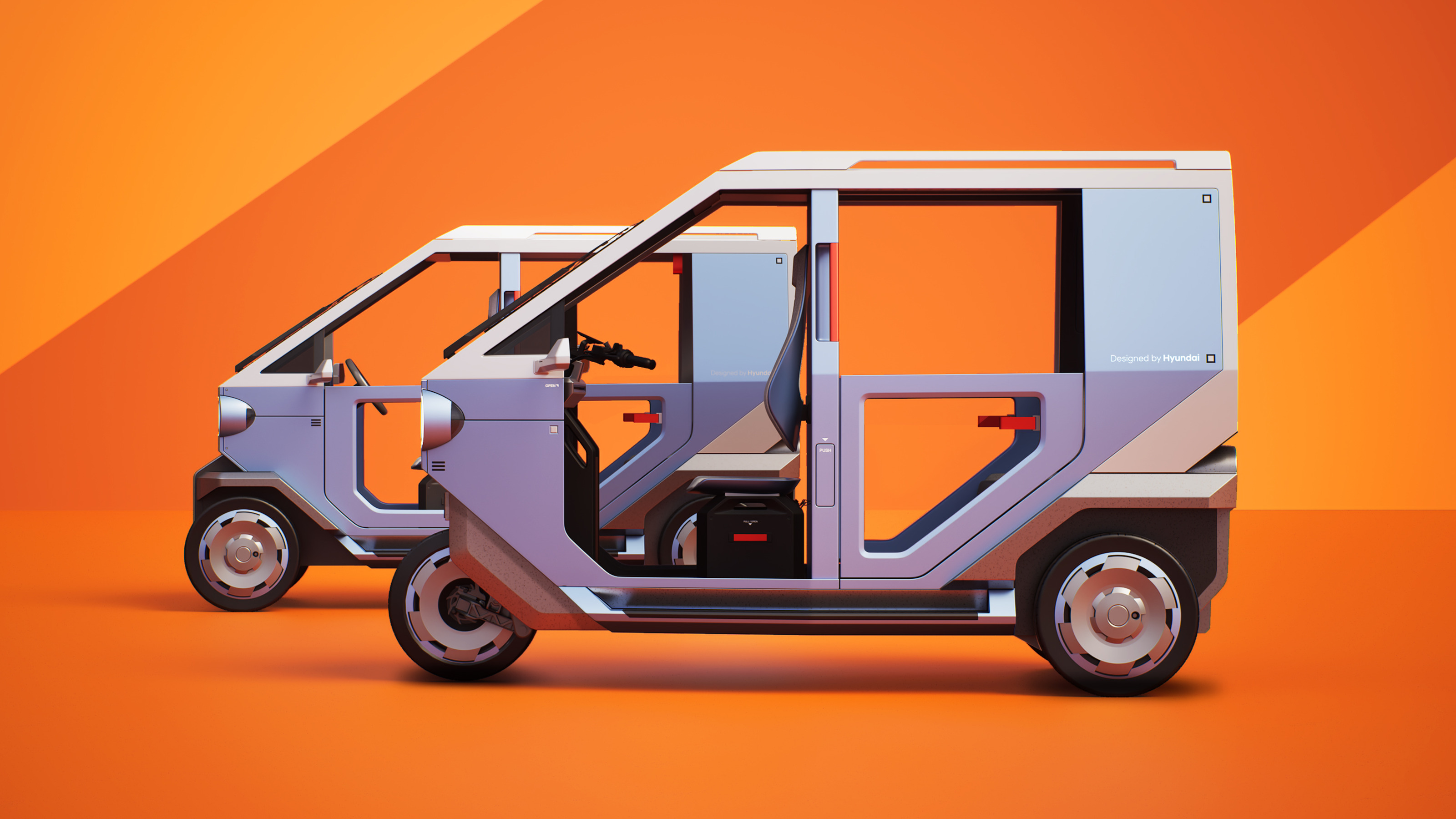
Hyundai E4W and E3W Micro Mobility concepts

The E3W and E4W are designed to be endlessly reconfigured
Jonathan Bell has written for Wallpaper* magazine since 1999, covering everything from architecture and transport design to books, tech and graphic design. He is now the magazine’s Transport and Technology Editor. Jonathan has written and edited 15 books, including Concept Car Design, 21st Century House, and The New Modern House. He is also the host of Wallpaper’s first podcast.
-
 Titanium watches are strong, light and enduring: here are some of the best
Titanium watches are strong, light and enduring: here are some of the bestBrands including Bremont, Christopher Ward and Grand Seiko are exploring the possibilities of titanium watches
By Chris Hall
-
 Warp Records announces its first event in over a decade at the Barbican
Warp Records announces its first event in over a decade at the Barbican‘A Warp Happening,' landing 14 June, is guaranteed to be an epic day out
By Tianna Williams
-
 Cure your ‘beauty burnout’ with Kindred Black’s artisanal glassware
Cure your ‘beauty burnout’ with Kindred Black’s artisanal glasswareDoes a cure for ‘beauty burnout’ lie in bespoke design? The founders of Kindred Black think so. Here, they talk Wallpaper* through the brand’s latest made-to-order venture
By India Birgitta Jarvis